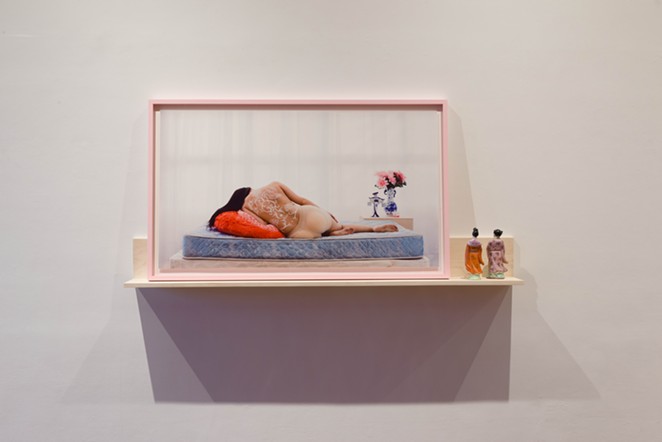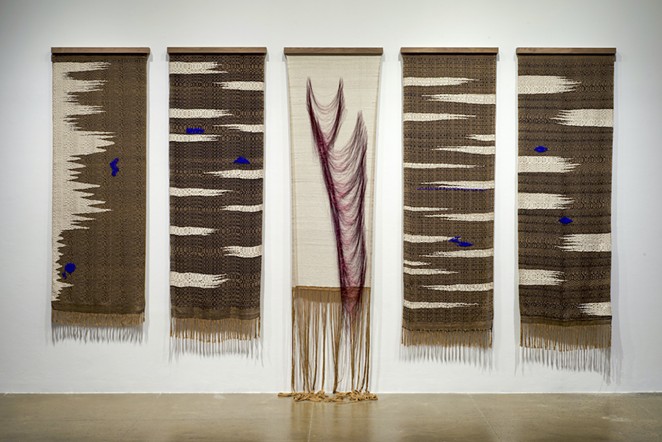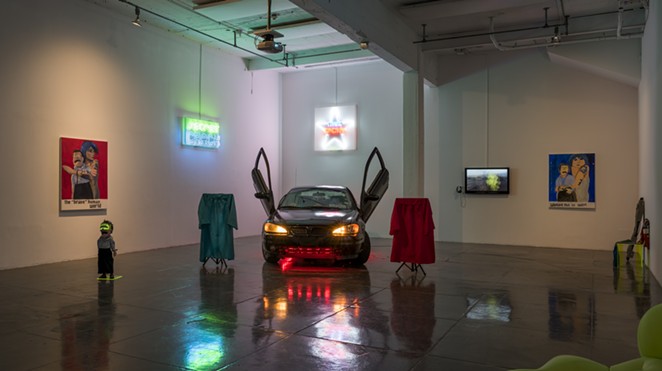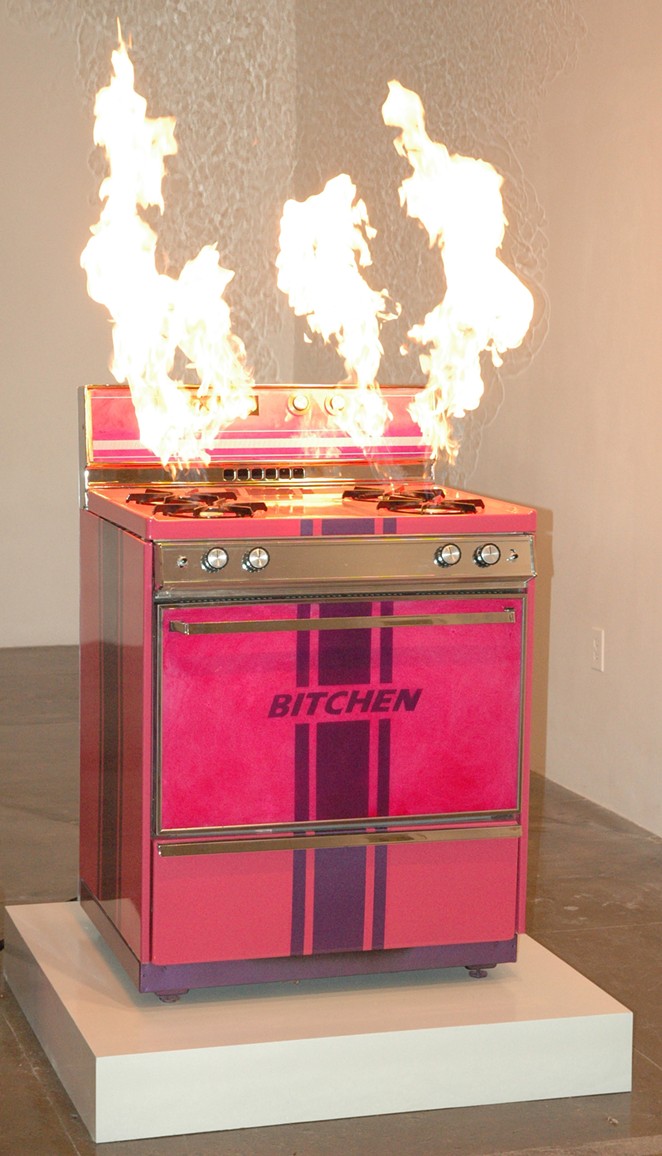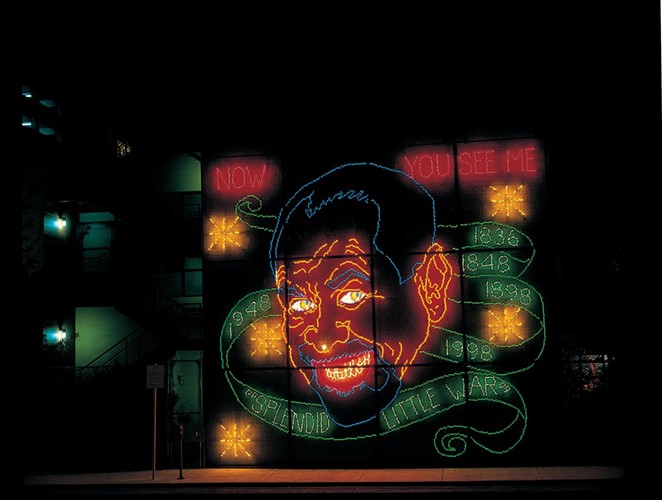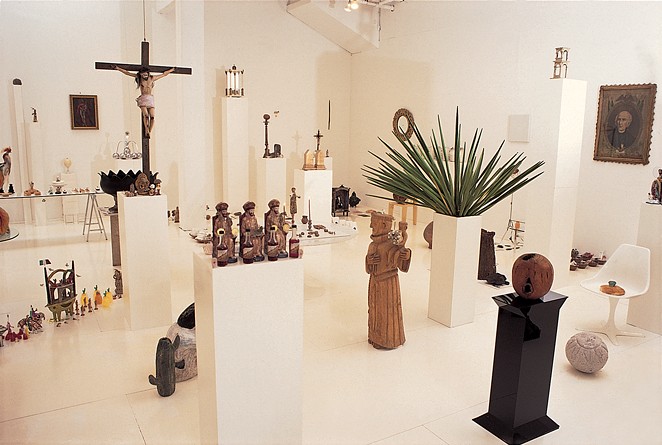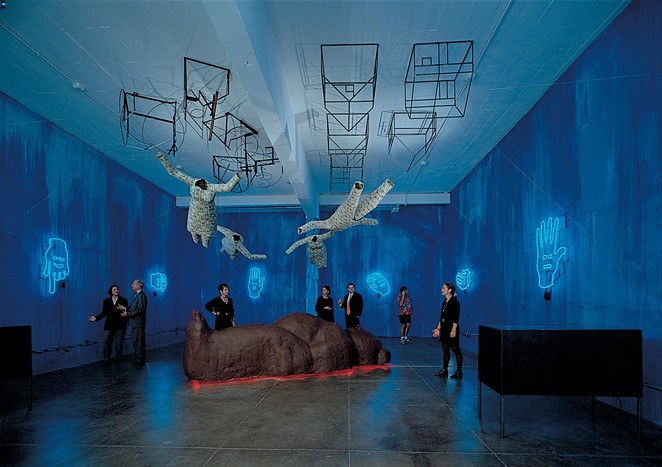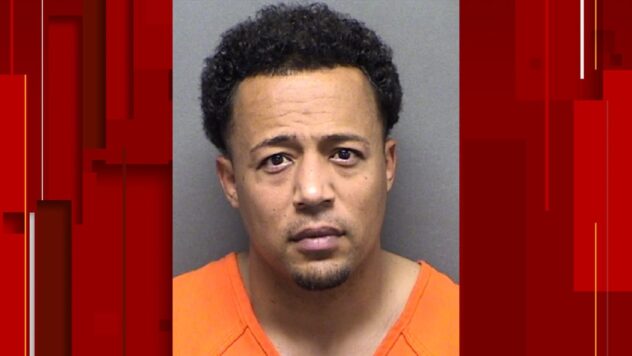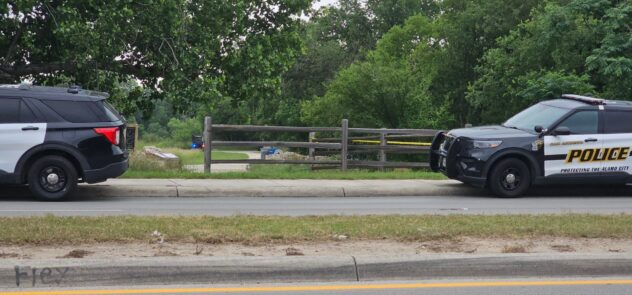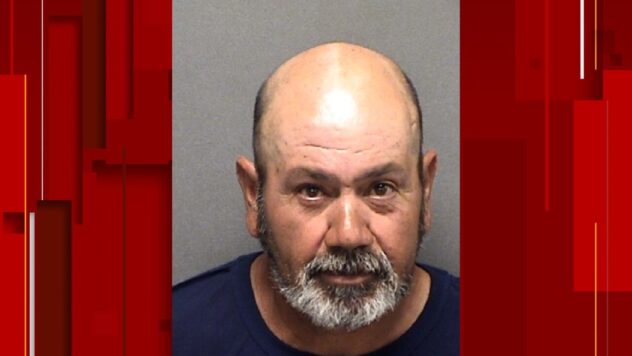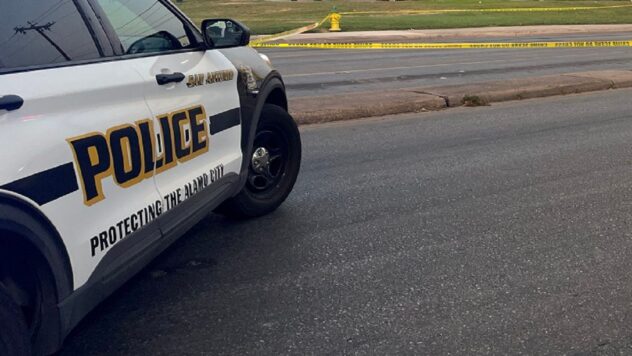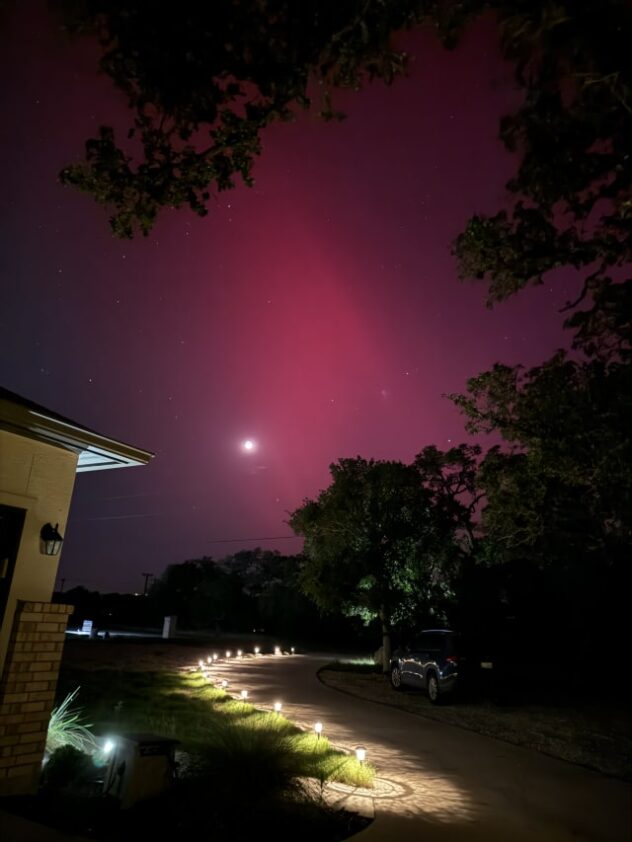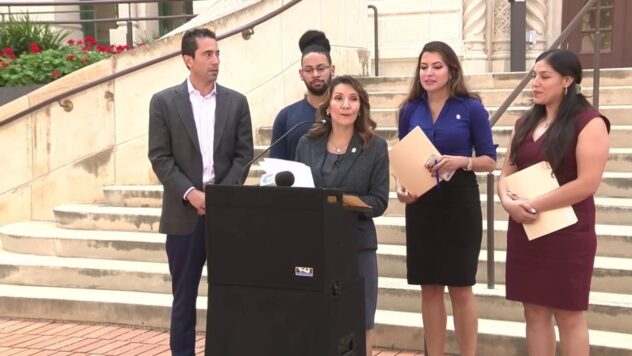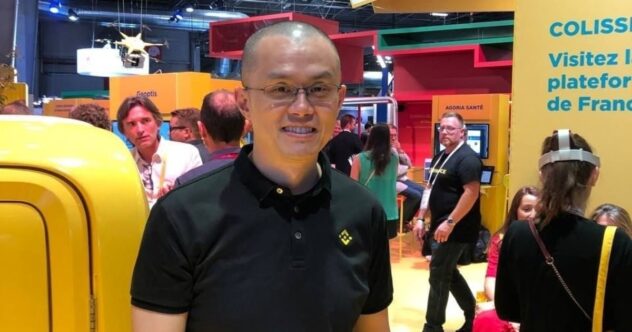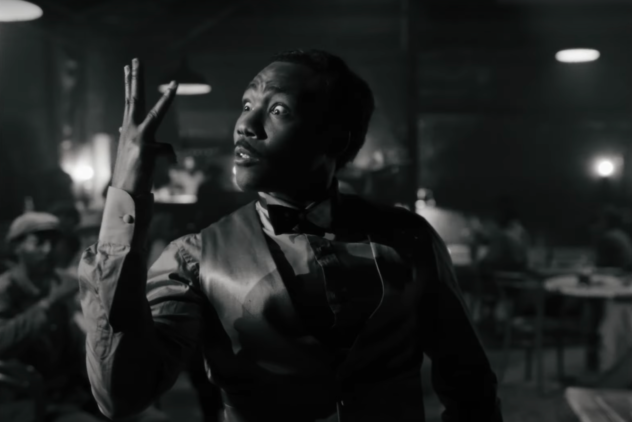Who’s Next? Artpace’s Open Call Is Poised to Jumpstart the Careers of More Texas Creators
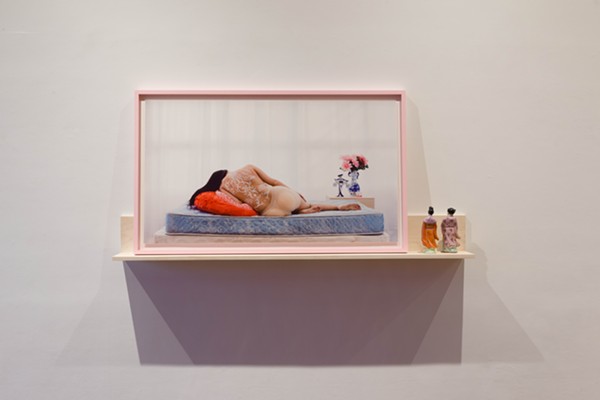
In her 2003 memoir Dreaming Red, late San Antonio artist, collector, philanthropist and Pace Foods heiress Linda Pace chronicled her inspirations and goals for Artpace, the nonprofit residency program and contemporary art space she founded in 1993.
“I wanted to bring artists to San Antonio to do the kind of work they had always wanted to do,” Pace recounted. “I wanted to build a place that would put the emphasis on the process, not the product. By creating such a place, I would also be exposing others to contemporary art they wouldn’t be able to see without traveling to places like New York. This was important to me.”
Inspired by institutions such as New York’s Dia Art Foundation — founded in 1974 “to help artists achieve visionary projects they might not otherwise be able to pull off — Pace and her collaborators devised the International Artist-in-Residence (IAIR) program, which invites guest curators to select trios of artists — one from Texas, one from elsewhere in the U.S. and one from abroad — to live and work at Artpace for a two-month period that culminates with an exhibition for each artist.
Likened to a “laboratory of dreams,” Artpace stands out from other residencies by placing Texas artists alongside nationally and internationally recognized figures. It also encourages residents to take creative risks and offers support in the form of a full-time staff, a $6,000 stipend and a production budget of up to $10,000.
A champion of San Antonio’s art scene, Pace hoped Artpace would earn worldwide credibility — a goal it’s safe to say she saw realized before her 2007 death. Since its inaugural cycle in 1995, Artpace has hosted more than 200 resident artists, including global art stars Teresita Fernández, Leonardo Drew, Wangechi Mutu, Lorraine O’Grady, Isaac Julien and Nancy Rubins, not to mention Venice Biennale Golden Lion award winners Annette Messager, Carolee Schneemann, Regina José Galindo and Christian Marclay.
Frequently boasting star power of their own, IAIR guest curators select artists based on their own interests and thematic pursuits. However, Artpace assists them with the selection of Texas artists by compiling a list of qualified candidates based on an annual open call.
“Linda’s commitment to San Antonio and Texas artists is honored by the Artpace open call,” Artpace Director Riley Robinson said. “[It’s] an opportunity for any contemporary artist living in Texas to have their artwork seen by curators from around the world with the possibility for a residency and exhibition at Artpace or inclusion in other exhibitions by that curator elsewhere in the world.”
The future of real-life exhibitions remains uncertain in the era of COVD-19 — the current round of IAIR exhibitions opened in March and is currently viewable online only. Even so, Artpace is pushing forward with its Texas open call for three 2022 residency cycles. With the deadline for applications approaching on August 21, we took the opportunity to look back at 10 memorable exhibitions created by San Antonio artists spanning from Artpace’s infancy to its recent past.
For application guidelines and details, visit anyartist.org or click on the Texas Open Call tab under Residencies & Exhibitions dropdown menu at artpace.org. The $15 application fee has been waived this year due to the financial hardships of COVID-19.
Jennifer Ling Datchuk: “Thick” (Spring 2019)
An Ohio native of Chinese, Russian and Irish descent, Jennifer Ling Datchuk is perhaps best recognized for her work in porcelain but employs a wide array of materials to explore identity, race, beauty, rituals and history. “I applied to the Artpace open call every year for almost 10 years,” Datchuk explained. “I felt like I won the lottery when Dr. Deborah Willis selected me as the Texas resident [for] spring 2019.” During her residency, Datchuk created “Thick,” an installation anchored by a massive red curtain rendered in artificial hair and porcelain beads. On either side of the curtain — which she described as “a metaphor for the thresholds we cross and spaces we enter and exit daily in our lives” — Datchuk presented fascinating sculptural objects and fashionable photographs that challenged female representation and illustrated the reclamation of ideas and spaces. “The Artpace team helped realize my exhibition, which lived as a financially and physically impossible idea in my sketchbook,” Datchuk said.
Ana Fernandez: “AM/PM” (Fall 2018)
Over the last decade, Corpus Christi native Ana Fernandez has tapped into the pulse of San Antonio, both through her moody and captivating paintings and as proprietor of Chamoy City Limits, a Tex-Mex food truck-turned eatery serving up chili and tricked-out raspas. Fernandez’s interests in food culture and the enigmatic street scenes of South Texas coalesce magically in Los Valles, a 2017 painting owned by Ruby City, the permanent home for the Linda Pace Foundation’s permanent collection. During a summer program at Skowhegan School of Painting & Sculpture, Fernandez learned the art of fresco and incorporated the ancient medium into her Artpace exhibition “AM/PM.” While the immediate draws were arguably Fernandez’s paintings of unassuming subjects — including a Quik Mart convenience store and the darkened parking lot of Don José Mexican Cafe — the addition of frescoes and found-object sculptures brought the room together in an intriguing way. “Living [at Artspace] was interesting in that you experience the institution from the inside out in a quiet, intimate way,” she said. “There’s a point right before the opening when everything becomes formalized. The studio becomes an exhibition space, and what was once private becomes public again.”
Jenelle Esparza: “Gathering Bones” (Summer 2018)
Although she identifies chiefly as a photographer, Corpus Christi native Jenelle Esparza has proven herself as an interdisciplinary artist, often working with sculpture and textiles to explore cotton and its myriad connotations. Beyond mining her family’s roots in South Texas cotton fields, Esparza investigates the ubiquitous crop as “a symbol of oppression due to its history of violence and exploitation in the U.S.” Pensive and deftly executed, her Artpace exhibition “Gathering Bones,” comprised handwoven tapestries, electroplated copper cotton spurs and short-handled garden hoes curiously rendered in borosilicate glass. “My experience at Artpace was pivotal for the trajectory of my work,” Esparza said. “Our curator, Dr. Jeffreen Hayes, was very hands-on and involved in our progress, and that was very memorable and influential to me.”
Christie Blizard: “We Invent Nothing” (Summer 2017)
The harder one tries to “understand” the darkly humorous work of artist and disruptor Christie Blizard, the harder the task becomes. Born in rural Indiana, Blizard has made numerous appearances on Good Morning America and The Today Show — not as a guest but a conceptual photo-bomber holding signs scrawled with perplexing messages such as “I Am Not A Ghost.” Often using her own body as a canvas, she’s worn 3D-printed masks of Scarlett Johansson, Elle Fanning and Jennifer Lawrence and sees them as “the empty vessels for the telepathic transference into the death dimension.” She’s channeled her interests in “the non-binary, the posthuman and the transhuman,” into costumed performances at Burning Man and the Roswell UFO Convention, and she’s frequently accompanied by a puppet modeled after revolutionary French philosopher Jean-François Lyotard. In addition to video footage of her trippy performances at EDM festivals, her Artpace exhibition “We Invent Nothing” featured flashing neon signs that read “Secret Crack” and “True Sperm,” and a Trans Am tricked out with scissor doors and a glowing undercarriage. “My residency has had a tremendous impact on my work,” Blizard said. “It started the work I’m doing now and opened up doors that I didn’t’t even know existed.”
Katie Pell: “Bitchen” (Fall 2006)
Raised in the suburbs of Wilmington, Delaware, late artist Katie Pell found inspiration everywhere from the woods behind her childhood home to hippy culture and rock stars. Roughly a decade after relocating to San Antonio, Pell hit a high note with “Bitchen,” an Artpace exhibition that fused feminist concepts with lowrider culture. Built around a narrative following “a group of women who win a class-action lawsuit against a major discount retailer and use their small windfall to begin a custom appliance enterprise,” the ambitious endeavor involved a candy-striped dryer equipped with disco lights, a freezer outfitted with a chandelier, an Allman Brothers Memorial Toaster and a flame-spitting stove now in the permanent collection of Ruby City. Amusingly, Pell entered some of these appliances in car shows. Speaking to the Current last year, Pell said her Artpace residency was residency was a lot of fun. “We partied a lot. And I liked working with the other residents.”
Anne Wallace: “El Otro Lado” (Fall 2004)
Born in New York City and raised in a Texas ranching family, Anne Wallace taught English in Guanajuato for six years — “I got deported,” she confessed — and then spent nine years doing humanitarian work along the U.S.-Mexico border. In addition to co-founding Laredo’s Refugee Assistance Council, Wallace was part of Amnesty International’s first Women’s Human Rights Committee. When she learned she’d been selected for an Artpace residency, Wallace set out to drive the entire length of the U.S.-Mexico border. While on the 2,000-mile trek, she recorded stories from migrants, environmentalists, landowners, a tribal member, a reformed coyote and a group of women who told her about a binational volleyball game using the border fence as a net. “There are so many wonderful things [about border culture] that are being destroyed now with the wall, our politics and militarization,” Wallace said. “And that [game] was just an incredible example of these communities defying norms, defying the militarization and coming together to have fun.” When she returned to Artpace, Wallace assembled a sound and video installation she titled El Otro Lado. “I’ve had some really wonderful residencies,” Wallace said. “But the support of Artpace staff and their mission to really allow and even encourage artists to take risks and push their work in new directions and have faith in that process, that’s very powerful and really extraordinary in my experience. … That’s the hallmark and the genius of what Linda set up.”
Chuck Ramirez: “Bean & Cheese” (Spring 2002)
For many years, late local artist Chuck Ramirez functioned as the glue that held much of San Antonio’s art scene together. Known by his many friends as “Tía Chuck,” Ramirez had a knack for celebrating the overlooked, the discarded and the beaten-down. Through large-scale, hyper-detailed photographs, Ramirez presented worn-out brooms, decapitated piñatas and over-stuffed garbage bags as objects of beauty. In the course of his Artpace residency, Ramirez created 17 photographs connected by the common thread of food. Raw meat, a whole chicken and sausage links shared the walls with quieter subjects that have emerged among Ramirez’s best-recognized works, including empty candy trays and a styrofoam Whataburger cup with an unassumingly poignant message in sharp focus: “When I am empty, please dispose of me properly.” Since his death in 2010, Ramirez’s life and work have been the subject of the McNay Art Museum’s 2017 retrospective “All This and Heaven Too” and Angela and Mark Walley’s 2018 documentary Tía Chuck.
Ángel Rodríguez-Díaz: “Splendid Little War” (Winter 1998)
Born in San Juan, Puerto Rico, Ángel Rodríguez-Díaz relocated to San Antonio in 1995 to live with his partner and fellow artist Rolando Briseño. Hailed as a master portrait artist, Rodriguez-Diaz began exhibiting his work in the 1980s and his dramatic 1993 painting The Protagonist of an Endless Story — which captures renowned author Sandra Cisneros against a fiery sunset — is held in the permanent collection of the Smithsonian American Art Museum. While in residence at Artpace, Rodríguez-Díaz showcased his masterful painting skills with a self-portrait as a chupacabra but also ventured into unexpected territory with a curtain made from pennies, two large-scale chalk murals featuring characters ranging from the Taco Bell chihuahua to the Virgen de Guadalupe, and a slightly menacing, 32-foot-tall self-portrait rendered in 8,500 Christmas lights that graced Artpace’s facade. As Rodriguez-Diaz has been battling Alzheimer’s for the past three years, Briseño was kind enough to offer his own recollections of his partner’s residency. “I remember that Linda liked his light curtain so much that she left it up until the next show opened … I took Linda to lunch around that time and talked to her about the Latino experience. After that, Artpace was very accommodating to Latinos and many more Latinos showed there.”
Franco Mondini-Ruiz: “Infinito Botánica” (Fall 1996)
During the 1990s, Boerne-born attorney-turned-artist Franco Mondini-Ruiz held court at Infinito Botánica — a buzzy, hybridized space appointed with religious statues, candles, incense, milagros, antiques, tchotchkes and contemporary art created by himself and other San Antonio fixtures. As his cleverly curated botánica looked and felt like an evolving art installation, it came as no surprise when Mondini-Ruiz recreated the space in the confines of Artpace — and then proceeded to sell the assembled items. Summed up by art critic Frances Colpitt as “a fluid exchange of cultural objects — historical, ethnic, sexual, and religious — played out against the sleek chic of the space’s decor,” Mondini Ruiz’s “Infinito Botánica” went on to inhabit other prestigious spaces, including the Whitney Biennial in 2000.
Ken Little: “Soaring — The Rules of Engagement” (Winter 1995)
Hailing from the Amarillo suburb of Canyon, artist, musician and educator Ken Little has been tied to Artpace since its inception. “I met Linda before Artpace was founded,” Little explained. “She came by and toured my studios, and I had five other artists there and Riley Robinson was one of them — and that’s where she met Riley. Linda had an amazing vision of what she wanted, and Riley had the knowhow to get it done. Riley had been my assistant in sculpture at UTSA.” Not only was Little selected as Artpace’s fourth San Antonio resident, he taught a handful of early residents, including Jesse Amado, Elizabeth McGrath and Joe Daun. “[Linda Pace] really upped our profile for the graduate program at UTSA and helped me build that program to be what it eventually was — nationally recognized,” Little said. “[Artpace] took local artists and they put us shoulder-to-shoulder, side-by-side with national and international figures, without any kind of discrimination. And basically, took what would be ‘local artists’ and made that not a bad term anymore.” For his 1995 exhibition “Soaring — The Rules of Engagement,” Little presented a synthesis of sculptural elements he’d been working with for several years — “neon drawings” of hands with facial expressions, floating human figures covered in dollar bills, steel house frames suspended from the ceiling and a massive, glowing clay bear seemingly asleep in the center of the gallery. “She wanted us to go as far as we could towards something that would stretch our boundaries, stretch our limits,” Little said. When asked if he’d kept any of the installation’s components, Little replied that he had. “I most recently used [the money figures] in a show at Artpace of former residents. They were actually flying in air in the [1995] exhibition, and I took them and hammered them flat on the floor and kind of destroyed them, and laid them on the floor at Artpace, and called it Making America Great Again. So, it came full circle.”
Stay on top of San Antonio news and views. Sign up for our Weekly Headlines Newsletter.

